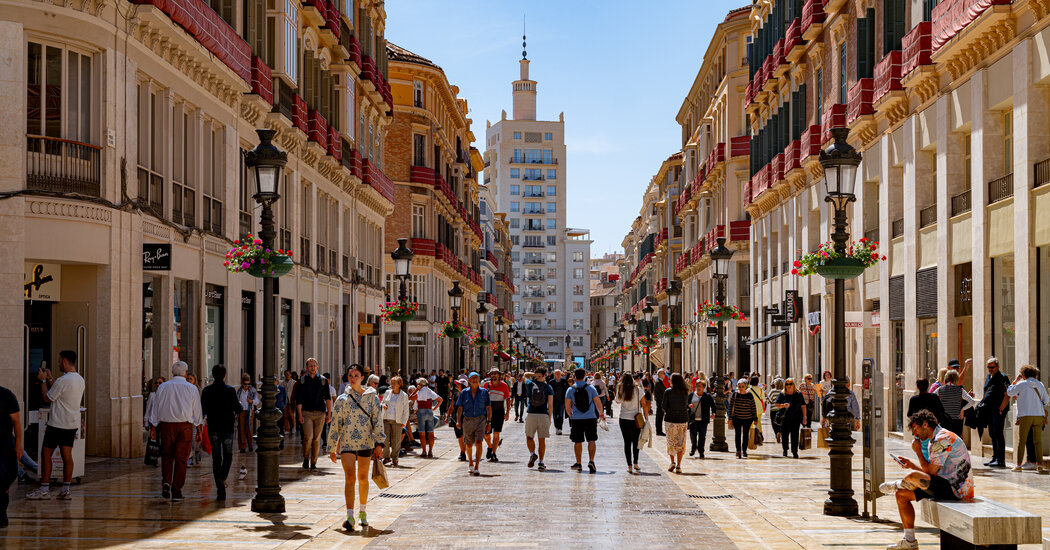In honor of this year’s 50th anniversary of the death of Pablo Picasso, museums and other cultural institutions are pulling out all the stops, with about 50 exhibitions and events in the United States and Europe. Some offer novel perspectives on the celebrated artist’s seven-decade career: At the Cincinnati Art Museum, “Picasso Landscapes: Out of Bounds” focuses exclusively on the artist’s landscapes, while at the Musée Picasso, Paris, the British men’s wear designer Paul Smith has added bold stripes and saturated hues to the walls where some of Picasso’s best known masterpieces are displayed.
But one of the best places to discover pre-celebrity Picasso is his hometown, Málaga, the Andalusian port city on the southern Mediterranean coast of Spain. This is where the artist was born and, long before he became a household name, where his extraordinary artistic talent became evident to his father, José Ruiz Blasco, a painter and an art teacher, and the rest of his family, as well as their circle of artist friends.
Though the family relocated to A Coruña in northern Spain when Pablo was 9 years old, and he would go on to study and live in Madrid and Barcelona before settling in Paris in 1904, Picasso always considered himself a malagueño. Many of the themes first depicted in his youth would continue to appear in his art until the end of his life.
“He adored Spain and always honored his Andalusian roots,” said his grandson, Bernard Picasso, in a telephone interview. “You can see it in the colors he used, the bullfighting imagery, the Mediterranean.”
Picasso last visited Spain in the mid-1930s, shortly before the Spanish Civil War, which ended in 1939 with Gen. Francisco Franco establishing a military dictatorship that endured nearly 40 years, outlasting Picasso’s own life by more than a year. The artist, who abhorred the repressive regime, never returned to his homeland again.
Were he to turn up in Málaga today, Picasso might be shocked to find a museum bearing his name — the Museo Picasso Málaga opened in 2003 and now draws nearly 700,000 visitors a year. Then again, given his reputation for having an outsize ego, maybe he wouldn’t be surprised at all by the museum, though he’d likely be charmed to find his childhood home, the square where he used to play, the church where he was baptized, as well as the art academy where his father taught — not to mention the city’s famous bullring, cathedral and other landmarks —…
Click Here to Read the Full Original Article at NYT > Travel…
